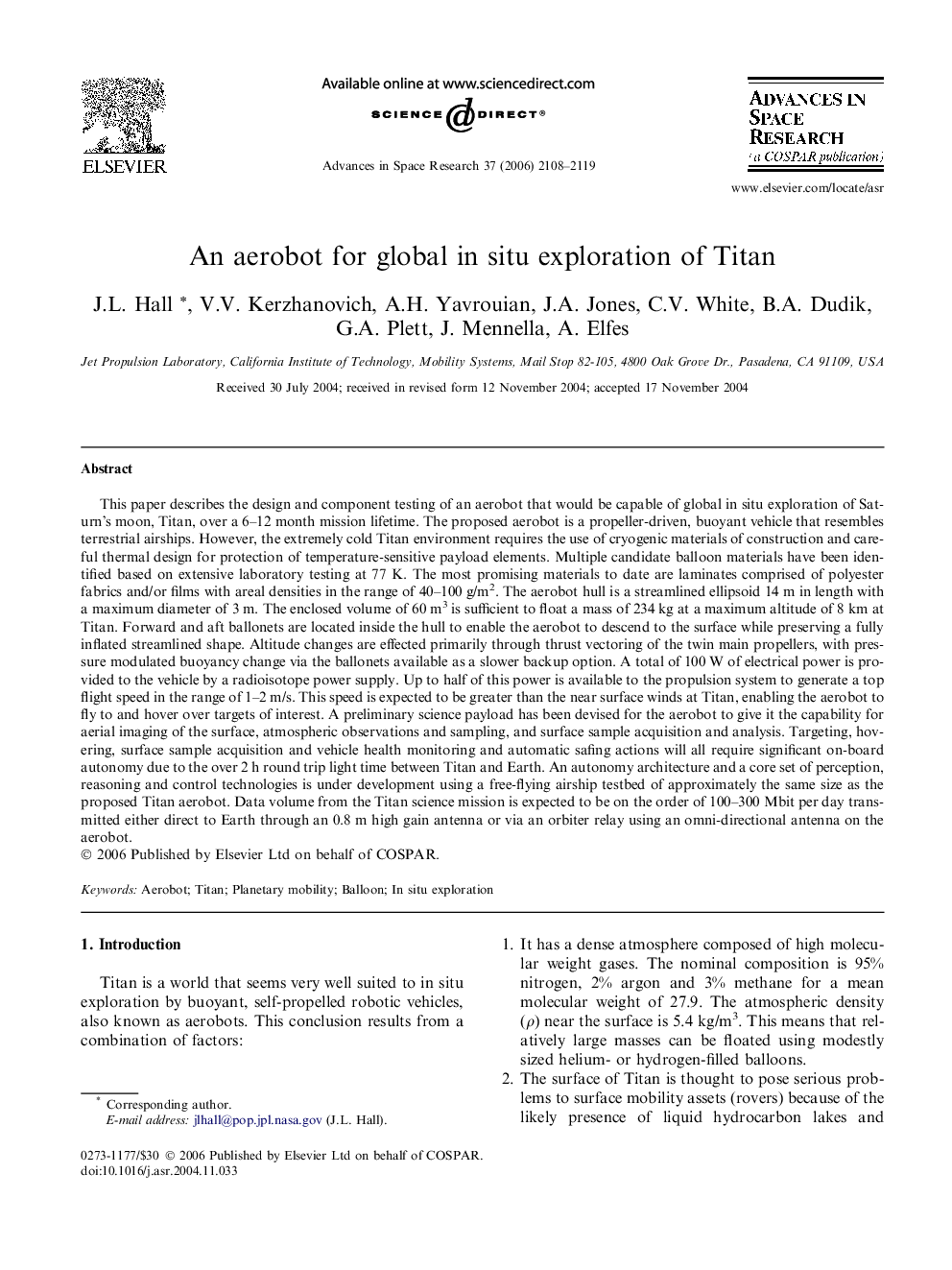| کد مقاله | کد نشریه | سال انتشار | مقاله انگلیسی | نسخه تمام متن |
|---|---|---|---|---|
| 1769213 | 1020261 | 2006 | 12 صفحه PDF | دانلود رایگان |

This paper describes the design and component testing of an aerobot that would be capable of global in situ exploration of Saturn’s moon, Titan, over a 6–12 month mission lifetime. The proposed aerobot is a propeller-driven, buoyant vehicle that resembles terrestrial airships. However, the extremely cold Titan environment requires the use of cryogenic materials of construction and careful thermal design for protection of temperature-sensitive payload elements. Multiple candidate balloon materials have been identified based on extensive laboratory testing at 77 K. The most promising materials to date are laminates comprised of polyester fabrics and/or films with areal densities in the range of 40–100 g/m2. The aerobot hull is a streamlined ellipsoid 14 m in length with a maximum diameter of 3 m. The enclosed volume of 60 m3 is sufficient to float a mass of 234 kg at a maximum altitude of 8 km at Titan. Forward and aft ballonets are located inside the hull to enable the aerobot to descend to the surface while preserving a fully inflated streamlined shape. Altitude changes are effected primarily through thrust vectoring of the twin main propellers, with pressure modulated buoyancy change via the ballonets available as a slower backup option. A total of 100 W of electrical power is provided to the vehicle by a radioisotope power supply. Up to half of this power is available to the propulsion system to generate a top flight speed in the range of 1–2 m/s. This speed is expected to be greater than the near surface winds at Titan, enabling the aerobot to fly to and hover over targets of interest. A preliminary science payload has been devised for the aerobot to give it the capability for aerial imaging of the surface, atmospheric observations and sampling, and surface sample acquisition and analysis. Targeting, hovering, surface sample acquisition and vehicle health monitoring and automatic safing actions will all require significant on-board autonomy due to the over 2 h round trip light time between Titan and Earth. An autonomy architecture and a core set of perception, reasoning and control technologies is under development using a free-flying airship testbed of approximately the same size as the proposed Titan aerobot. Data volume from the Titan science mission is expected to be on the order of 100–300 Mbit per day transmitted either direct to Earth through an 0.8 m high gain antenna or via an orbiter relay using an omni-directional antenna on the aerobot.
Journal: Advances in Space Research - Volume 37, Issue 11, 2006, Pages 2108–2119